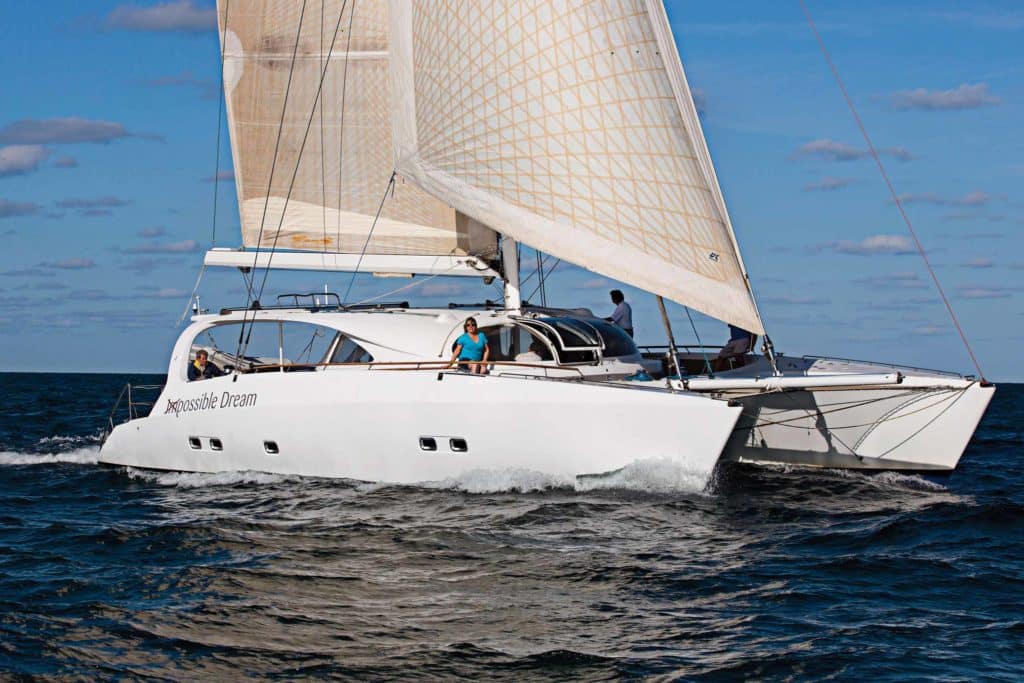
The sirens: I still remember the night in 1980 when they pierced the air. I was living in a dilapidated apartment on famous Bellevue Avenue in Newport, Rhode Island, in a once grand building that was being turned into pricey condos (which was why I’d soon be evicted).
I mention this solely because multiple sirens were a rare sound on Bellevue, so I knew something was seriously amiss. But I stayed put that evening, so it wasn’t until the next day when I discovered that a fellow I knew from a prominent local family — a very funny, handsome and outgoing guy named Harry Horgan, whom I’d even worked construction with one summer — had been badly hurt in an automobile accident.
And now Harry was a paraplegic.
I’m not entirely sure how I would’ve reacted to a similar situation — though I have my suspicions, and they’re not pretty — but I’m 100 percent positive I wouldn’t have done what Harry did next. Nope, I never would’ve had the courage, vision or stamina to launch a community sailing program called Shake-A-Leg dedicated to helping disabled people become more independent, active and vital. But losing his ability to walk inspired Harry to lift legions of folks atop his shoulders to come along for the ride.
Harry’s ongoing journey has been incredible. And thanks to his friend and fellow sailor Deborah Mellen, it’s about to become even more unlikely and amazing. That’s because Shake-A-Leg now has a true flagship, a fully adaptive 60-foot catamaran called Impossible Dream. And it’s going places.
Since 1990, Shake-A-Leg has been based in Miami’s Coconut Grove, where volunteers employ a fleet of 20-foot Freedom Independence sloops to take everyone from stroke victims to injured veterans to inner-city kids sailing. Deborah, a native New Yorker who was also paralyzed in a car crash, had been coming to Florida for many years and volunteering at Shake-A-Leg. Like Harry, she came to believe the organization could expand its breadth and reach by traveling to seaside communities and events, and also by spreading the word and demonstrating how sailing and water sports can build the skills and resiliency to succeed in life. They could also promote Shake-A-Leg Miami as a world-class destination to do just that.
All they needed was the proper vehicle. For Deborah, this also meant a vessel that combined form and function with accessibility. A successful businesswoman, philanthropist and world traveler, she found that “accessible” hotel rooms rarely functioned well and when they did, the design was institutional at best, even in luxurious hotels. Access, to her, wasn’t just a catchphrase; it was essential, and could be achieved with refined, aesthetic sensibilities. So there had to be an elegant solution for a Shake-A-Leg flagship.
And there was, in England: a cat designed by British architect Nic Bailey for a clothing company entrepreneur named Mike Browne, who’d commissioned it after he too became a paraplegic, following a skiing accident. What’s more, the boat was for sale. Several months ago, Harry and Deborah flew overseas to have a look, and both were smitten by the yacht, with its centrally located sail-handling and operating controls; its expansive side decks and ramps, which could accommodate eight wheelchairs at a time; its three helm stations and 360-degree views; and even the quartet of chair lifts, making it a cat truly unlike any other.
Actually, Deborah was more than merely smitten; as Harry says, she was “very bold” and committed.
She wrote a check on the spot.
Since then, Impossible Dream was shipped across the Atlantic, and is now in Miami undergoing sea trials. There have been a few glitches, as there always are when shaking down a new boat, but the short-term plan is to head up the East Coast this summer to get to know the cat, perhaps in time for the World Disabled Sailing Championships in Halifax, Nova Scotia, this August. The long-range goal is more ambitious: to sail Impossible Dream to Rio de Janeiro, Brazil, for the 2016 Summer Olympics and the coinciding Paralympic Games.
All that will take cash, of course, but the Miami office of the renowned Burson-Marsteller public-relations team has come aboard to help raise awareness for Shake-A-Leg among the public and potential corporate sponsors. And for now, Harry is more than content just learning the ropes. “This is my first experience sailing on such a large yacht,” he said. “Sailing at 10 knots, she rides so well. And she’s an ambassador; she really catches people’s eyes. It’s all been such a great experience so far.”
Much time has passed since those screaming night sirens. Justly, what Harry hears now is wind in the rigging.
Herb McCormick is CW’s senior editor. This article first appeared as “Silenced Sirens” in the June 2014 issue of Cruising World.








